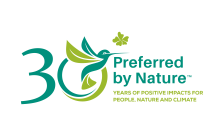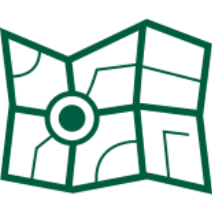Timber Legality Risk Assessment for Equatorial Guinea contains an evaluation of the risk of illegality in Equatorial Guinea for 6 categories and 22 sub-categories of law.
For the forest sector, we found:
• Specified risk for 21 sub-categories.
For processing sector:
• Specified risk for 5 sub-categories.
Forest cover is estimated to be 2.5 million hectares, representing more than 90 percent of the national surface area. Despite this extensive cover, the estimated rates of forest loss (deforestation plus forest degradation) show a worrying upward trend, particularly for forest degradation (FAO, 2020).
Only nationals can own land in Equatorial Guinea. Foreign companies are permitted to harvest through:
1. Forest Harvesting Lease Agreement (CAAF) (national forests)
2. Contract Agreement with
a. private owners (privately owned forests) OR
b. communities (communal forests)
Since late 2018, all forest companies operating in Equatorial Guinea need to form a registered company in the country, to be able to apply for a CAAF in the national forests (Forest Harvesting Lease Agreement); and they are required to establish a processing industry.
Also, individuals who wish to obtain a harvest permit need to establish microenterprises. In Equatorial Guinea, it is now forbidden to harvest a tree if the entity carrying out harvesting is not a registered company. (There are some exceptions for timber for subsistence purposes.).
Score: 17 / 100 in 2021
Rank: 172 out of 180 countries in 2021
Ban to export roundwood was in place until 26 October 2020 (Decree Nr. 93/2020)
There are currently no armed conflicts in Equatorial Guinea according to the Council on Foreign Relations' Global Conflict Tracker.
Uppsala Conflict Data program program does not contain updated information about deaths related to stated-based violence.
Not applicable
CITES appendix II: Guibourtia tessmannii, Diospyros crassiflora, Milletia laurentii and Prunus africana
Information Gathering
Timber sources
• Find out the different sources of legal timber.
• Determine which Source Type your timber comes from.
• Find out the main documents that can be used to indicate legality throughout the supply chain.
| Timber source type | Description of source type |
|---|---|
|
Privately owned forests (continental region) |
Natural or reforested forests, located within the limits of silvo-agricultural or rustic farms, and for which harvesting requires a logging authorization granted by the Forest Administration. The harvest can be carried out by the forest owner, or by an authorized third party. License/permit: harvesting permit (Autorización de Apeo) processed and approved by the responsible Ministry and signed by the President of the Republic. |
|
Community Forests (continental region) |
Area of natural or re-established forests that the State recognizes, limits and awards in permanent use to the rural communities. License/permit: Harvesting permit (Autorización de Apeo) awarded by the responsible ministry and signed by the President of the Republic. Before requesting a harvesting permit, a communal forest recognition certificate is required (signed by the President of the Republic). |
| National Forests (Forest concessions) (continental region) |
Areas of natural of re-established forests that the State reserves for itself, to exploit directly and exclusively or through third parties with the economic capacity to log, transform and export wood. It is considered a Production domain (maximum area of 50,000 ha, validity period: 15 years and can be renewed). License/permit: Forest concessions through a Forest Harvesting Lease Agreement (Contrato de Arrendamiento por Aprovechamiento Forestal, CAAF). It is requested from the Forestry Ministry to get the President of the Republic’s signature. |
Risk Assessment
Risk assessment summary
|
Legal rights to harvest
|
|
|
Taxes and fees
|
|
|
|
|
Third parties' rights
|
|
|
Trade and transport
|
|
|
Processing
|
|
Specified risk species
| Common/trade name | Scientific name | Risk information |
|---|---|---|
|
Bubinga |
Guibourtia tessmannii |
Illegal logging without authorisation |
| Envila (ebano) | Diospyros crassiflora | Illegal logging without authorisation |
| Nsonso (wengue) | Milletia laurentii | Illegal logging without authorisation |
Risk Mitigation
Mitigate the risks in your supply chain
Learn which actions we recommended to mitigate the risks associated with the timber sources from Equatorial Guinea.














